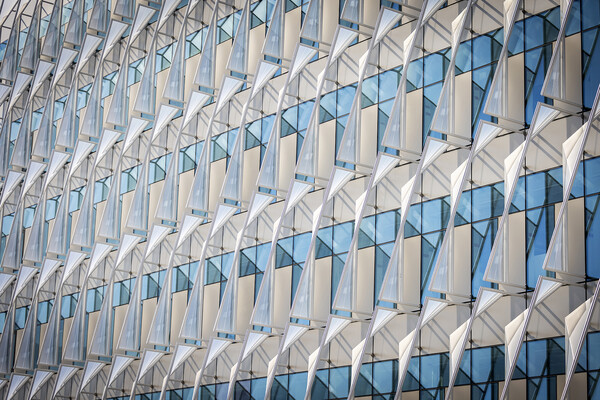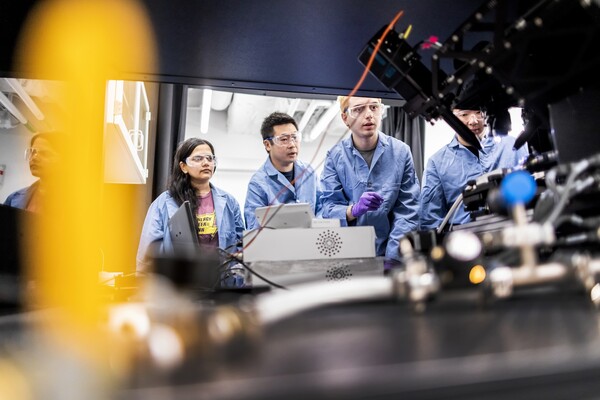
Image: Mininyx Doodle via Getty Images
Soon after President Amy Gutmann arrived at the University in 2004, she launched the Penn Compact, setting a forward-thinking academic and research agenda for the institution under her leadership.
Penn Connects was formed in 2006 as the “physical manifestation of Dr. Gutmann’s vision,” Anne Papageorge explains, and it has been enabled by some funding garnered from the $4.3 billion Making History Campaign. Penn Connects set a 30-year blueprint of construction—with new and updated buildings and open space—for the University City campus.
[youtube]NXZ8x1duUjg[/youtube]
Papageorge, vice president for Facilities and Real Estate Services (FRES), has managed the implementation of Penn Connects alongside University Architect David Hollenberg, as well as other leaders in FRES and the Office of the Executive Vice President. They’ve worked with everyone—from deans to students—at the University’s 12 schools to determine the best plans for the future.
“Part of the notion of Penn Connects is that it is building on contiguity,” says Hollenberg. “One of the great strengths of this campus is its physical compactness that helps foster interdisciplinary interactions.”
The first phase of Penn Connects, which lasted through 2011, was defined by the acquisition of the postal lands and the creation of the 24-acre Penn Park, among other projects such as the Weiss Pavilion, the Roberts Proton Therapy Center, the Smilow Center for Translational Research, and the Lerner Center.
Penn Connects 2.0, the second five-year phase of the plan, which comes to a close in 2016, is known for its revamped vision with an extra focus on sustainability and renovations of existing buildings, plus a new, major acquisition of a 23-acre former industrial parcel located at 3401 Grays Ferry Ave., just south of campus along the Schuylkill River. That’s now called Pennovation Works (formerly known as South Bank), and its first phase will be completed in 2016. Sasaki Associates led the design efforts of both Penn Connects and Penn Connects 2.0.
Primary themes that exist in the second phase include teaching and scholarship, medical research and clinical care, living and learning, campus and community, and past and future. Some big projects that are in line with each of these themes include, respectively, the Singh Center for Nanotechnology (2013) and the Neural and Behavioral Sciences Building (2016); the Jordan Medical Education Center (2014), the Penn Presbyterian Pavilion for Advanced Care (2015), and the South Tower of the Perelman Center for Advanced Medicine (2016); the ARCH (2014) and the New College House (2016); Kane Park (2013) and Perry World House (2016); and EVO (2014), the FMC Tower (2016), and the Pennovation Center (2016).
Since Penn Connects’ launch almost 10 years ago, there’s been 6 million square feet of new construction, 2.4 million square feet of renovation, and 27.25 acres of new open space created. The plan has seen a total commitment of $3.8 billion in public and private funding.
“It really has been a transformation,” Hollenberg says. “It’s a remarkably different campus than it was a decade ago.”
Penn Connects, which, alongside Sasaki Associates, was awarded the 2013 Excellence in Planning for an Existing Campus title from the Society for College and University Planning, will continue supporting projects for the next 20 years. Several of its identified initiatives are in various phases of completion. For example, design of the renovation of Hill College House is essentially complete, and construction will commence in May 2016. Other initiatives are in the conceptual phases, such as renovations to Sansom Place East and West, as well as the New Patient Pavilion and, perhaps, a new Wharton Executive Education Building, among others, Papageorge says.
Century Bond projects, which are large investments to upgrade existing building infrastructure (mainly HVAC and lighting), will continue, says Papageorge, as well as the MOD 7 Chiller Plant expansion.
“Every project has been incredibly meaningful,” Hollenberg says. “People always ask me what my favorite project is, and I can’t come up with one—they’re all fantastic.”
“It’s about quality, too,” Papageorge adds. “We are creating spaces that inspire students, teachers, and researchers.”
Lauren Hertzler

Image: Mininyx Doodle via Getty Images

The sun shades on the Vagelos Institute for Energy Science and Technology.
nocred

Image: Pencho Chukov via Getty Images

nocred